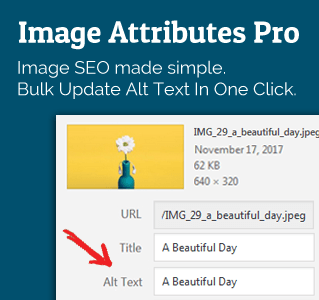A guest post by Michael Chibuzor. If you wish to write one, check out the guest-posting guidelines and details.
Search engine optimization has evolved since over the years. After the recent Google panda updates, a lot of blogs and corporate website witnessed a heavy blow. In the same vein, several other blogs climbed up the ladder, started ranking pretty well and has since stayed on Google’s homepage.
What factor contributed to these?
I want to share with you my 5 steps rules to optimizing your blog, in order to rank highly on search engines. When your blog becomes search engine friendly, there is no question of ranking, because every step required to succeed would fall into place. So, the first aspect of ranking highly on Google is to know what your blog is focused on…

1. What’s Your Primary Niche?
You’ve to clearly define your niche. When your niche is vague or widely spread, your blog tends to confuse search engine algorithms. The rate at which your blog’s rating goes depends on your niche. If you’re into gardening for instance, how widely spread are you in terms of this niche. Do you blog about gardening tools, tips and how to grow tomatoes – or do you focus on gardening tips alone?
There is no rule of thumb to niche selection. Just make sure you are focused in it. It isn’t creative when you channel you marketing to the wrong path. Whatever you do on your blog, your posts and every article you write should be channelled to your primary niche (gardening tips).
2. Know What Your Audience Want
There is no better way to read the minds of your prospects, than from the keywords they search with. Globally, web users who are targeted, speaks the same language when it comes to making searches. When you properly research your keywords, you would discover that when a prospect is ready to buy any specific product, their keyword swtiches from “how to, to “review” kind of keywords.
So, you must be able to know what they want at every point in time. For those who use android phones, you know that app is the rave of the moment right now. New apps are being delivered for sales and free downloads online these days. If your blog is for free downloads, be clear about that and research keywords that draws free prospects. If you’re into app reviews, research key phrases that shows intent of the search buying.
3. People Optimized Articles
After your keywords have been researched, you’re now ready to write your articles. Your article is the content that Google needs. Fresh content has no rival when it comes to getting fast indexing, ranking and overall blog performance.
It’s of note that new blogs are gradually out-ranking aged corporate websites. The secret is in fresh content. Keep your blog updates with original, informative and quality content and Google spider would come around you.
When writing your content, don’t be overly dependent on the keywords. For instance, while creating my recent blog that showcases 6pm coupon codes and sittercity discount deals, I had to optimize for online shoppers that wants to save. This way, Google is well informed on what my blog is all about and this makes ranking easier.
With the primary keyword researched, make sure it appears on the title. Begin with the keyword in the title and sprinkle in within the body of the content. Don’t try to embed key terms when it’s no convenient. Avoid stuffing these terms especially when the terms are long. Write in an interesting manner, suitable for the end user (me and you) and be natural.
Google wants articles and blog posts that interests visitors. If you write for the end user, Google would locate your blog wherever it is and rank you highly.
4. Focus On Deep On-page Linking
On-page SEO is very important. If you neglect this part, ranking would be difficult, notwithstanding the number of external backlinks you attain.
So, locate posts in your archive that are similar to your current posts and link both together. Utilize anchor texts when deep linking. When this is done, you create a strong web presence, that situates your entire search engine marketing and put you at a vantage point.
Do not insist on external backlinks, unless you’ve done your on-page deep linking. It’s the first that makes the significant difference.
5. Build Quality & Relevant Backlinks
Backlinks still remains one of the ranking criteria stipulated by Google. Even after the panda updates few months ago, backlinks still plays a very vital role. But not the way it’s been, now what you need more than anything is quality and relevant backlinks. How do I mean?
When building your backlinks, you should focus on blogs and websites that are in your niche. Do you know that a backlink from a gardening blog is superior and more relevant, than a link from a blog that talks about gaming. Even though the pagerank of the former is 1, Google would reward you for sharing similar content with that blog.
So, when building your backlinks with the hope of ranking higher on Google, make sure it’s relevant, quality and comes with anchor text. Nothing compares with contextual linking – focus on it and you’ll reap greater search engine ranking.
There you are. The 5 steps to optimize your web pages for better search engine ranking. It’s not all about knowing these steps, but the result you derive is in the doing. Take action today and meet me at the top!
The Author, Michael Chibuzor is a Freelance Writer and often writes about discount deals at coupon blogs that share promo code for sittercity and 6pm discounts. He is currently contributing to a coupon site that offers a free sittercity.com promotion code and coupon code for 6pm shoes






You’re right on focusing on deep linking. Too many people focus on the main page of their website and don’t realize that you need to build links for every page on your site! Great articles!
need more details about back linking and deep linking structure. please give me a good deep linking structure sample if you don’t mind…thanks
First of all, before starting with any type of LB campaign, you should determine goals and then start with strategy. On-Page SEO is very important in order to be recognized from search engines. But, even more important thing is to “spread your voice” on other blogs in your niche (Off-Page SEO). Sharing quality content and comments you will acquire authority and people start following your blog. That is long term story, but who persist in it glory goes to her/him.
hi Jeff…thanks for your advice. So…i must done on-page SEO before starting LB campaign. Did you using any tools for on-page/off-page SEO in your blog? If any, what tools/plugins you suggest to use?